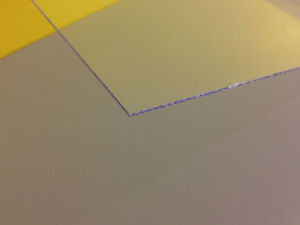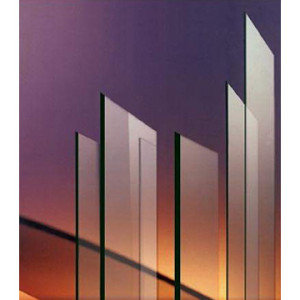Glass vs Acrylic
Comparison of Glass vs Acrylic in building material applications
[dt_quote type="blockquote" font_size="big" animation="none" background="fancy"] Conventional glass and it’s cousin acrylic (known more popularly by its trade name, Plexiglas) are both used regularly in building construction. While in recent years acrylic has become the more popular alternative, conventional or mineral glass has a long history and tradition within the building trades.[/dt_quote]
Pros and cons of Glass vs Acrylic with some suggestions regarding their applications.
- Load Bearing
For building applications where there will be a need for significant load bearing, Plexiglas or acrylic is probably going to be the best choice. Glass can be designed to bear weight or withstand pressure but it requires the glass to be very thick, thereby reducing transparency. Acrylic glass is much stronger and can withstand heavier loads.
- Light Transmission
While conventional wisdom would tell you that glass is better for transmitting light, the opposite is actually the case. Acrylic glass allows over 90% of the visible light spectrum to pass through it while glass typically allows somewhere between 80 to 90 % transference.
- Turn yellow
Another commonly held myth is that acrylic glass will yellow over time and exposure to direct sunlight. While this may be true for cheaper and lower quality acrylic products, brands such as Plexiglas and other higher quality acrylic products will usually provide a warranty against yellowing for up to 30 years.
- Maintenance
While acrylic does scratch easier than glass, scratches can usually be buffed out. If glass gets scratched, the glass will need to be replaced. Cleaning acrylic requires that the right cleaning solutions be used that are non-abrasive and specifically designed for acrylic surfaces which are much softer than glass.
- Weight
Acrylic is lighter than glass, making it easier and cheaper to transport and install. If the application is in an area where there is a danger of shattering, then acrylic would be the preferred solution as well since it is shatter resistant and generally stronger than the glass equivalent.
- Design Tool
As a design tool for architects, acrylic glass is more versatile. It can be purchased with different levels of transparency that are desirable when adapting the material to different types of indoor lighting and decorations. Opaque surfaces are also useful when trying to create areas of privacy.
- Heat Transfer
As a barrier to the transfer of heat or cold, acrylic comes out the winner in an apples to apples comparison. Acrylic windows are going to be about 20% more energy efficient than the glass equivalent. A note of caution on this issue – thermo-pane or laminated glass windows with air barriers between layers of glass are excellent insulators as well. Our comparison is of the materials only.
- Easier to work with
Last but not least, acrylic is easier to work with. It is bendable so it is easier to fit into frames and it can be cut to size by cutting it with a hacksaw. Holes can be drilled or made by melting through the surface with a soldering iron. If acrylic is dropped or hit with something it won’t shatter like glass does, making it easier to manage in a construction site.
[dt_button size="big" style="default" animation="none" color_mode="default" icon="" icon_align="left" color="" link="https://buildingmaterials.com.my/contact-building-material-…/" target_blank="true"]GET A FREE QUOTE NOW[/dt_button]





